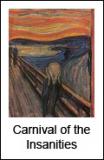70 Missions Over Europe
As we give thanks to America’s veterans and soldiers this Memorial Day our prayers and thoughts turn to those who did not make it home; my thoughts today have also turned to those I have known who did make it home. Last weekend I attended a memorial service (on Armed Forces Day) for Arthur H. Barton, a man I wrote about here and alluded to here. At the time I was writing from some old memories but today, thanks to Art’s daughter Lesley, I have Art’s war record in front of me and it is impressive. During Art’s ceremony, one that included the very moving military Flag Ceremony, Art’s brother-in-law quietly alluded to the fact that Art had flown 70 missions over Europe and how he had known Art for years before he learned of that fact. As he slowly repeated “Seventy missions over Europe” it was clear that those of his generation know how incredible and important Art’s achievement was. Quite simply, Art could have been buried in a farmer’s field in France.
When the Japanese attacked Pearl Harbor Art was a 20 year old Chicagoan selling furniture during the day and attending Northwestern University at night. Like so many of his contemporaries Art soon joined the military, in his case the Army Air Force. Art trained in Santa Anita, California and received his Navigator Wings in October of 1942, about the time that he turned 21. Second Lieutenant Barton was assigned to the 453rd Bomb Squadron, 323rd Bomb Group, which was part of the 8th Air Force. In April 1943 Art was stationed in Earls Colne, England as a navigator/bombardier. Art flew in the Martin Marauder B-26 medium bomber named “Goatee Hell”.
Among Art’s military awards were two Purple Hearts, the first for being wounded on a mission over Martinvast, France and the other for being injured on D-Day. One of Art’s proudest moments was serving as lead navigator on two low-level bombing raids (since the original writing I've been informed that there Art flew on 5 other missions on D-Day)in support of the D-Day landings, June 6, 1944. During his second (actually his seventh) mission on D-Day a Nazi anti-aircraft shell-burst shattered the Plexiglas nose that Art was seated in; he died earlier this month with some of that shrapnel still in his body.
Art served with and remained friends with a number of his old crew members including: pilot Col. Robert (Bob) H. Adams, co-pilot F/O Robert “Brownie” K. Brown, engine gunner S/Sgt. Clarence “Blackie” M. Blackmore and radio operator-gunner Sgt. Archie “Russ” Russell Martin. Of course Art also had a war-time nickname, it was “Buzz”. The group flew most of their missions over France, Holland, Belgium and the submarine pins in Norway.One of Art’s amusing war time memories was of the time that the B-26 “Marty Marauder” crashed into their base and right into the “Goatee Hell”, wrecking both planes. Their Master Sergeant George Feehan was not about to lose 2 planes in one crash so the crews spent the next 3 weeks welding the good halves of each plane to each other. The new plane featured the nose of the “Goatee Hell” (veteran of 51 missions) and the tail of the “Marty Marauder” (veteran 57 missions); unfortunately I do not know the name of that B-26 mashup.
After leaving Europe Art trained French officers at Selfridge Field in Michigan and Barksdale Field in Louisiana. After that Art participated in the Seventh War Bond Drive. The 23 year old First Lieutenant Arthur H. Barton was honorably discharged from the Army Air Force on June 14, 1945 after being awarded the following decorations:
The Distinguished Flying Cross
2 Purple Hearts
The Air Medal with 2 silver and bronze oak leaf clusters
The European Theater Medal with 2 battle stars
American Theater and Liberty Medals
Thank You Art and Thank You to all who served honorably.
My initial post on the life of Art Barton can be found here, it contains a few great tidbits that are not contained in this post like:
As Art went from plane to plane during the war he amassed so many missions that the Air Corps wanted him out of the theater and back in America selling War Bonds as a bona fide war hero. They were also worried that after so many missions he was starting to enjoy them. When Art was getting the necessary paper work done in order to return to the States, he was pulled out of line. The officers who pulled him out of line asked him if he would like to train for a secret bombing mission in the Pacific theater. Art replied that he had already cabled his mother to tell her of his imminent return and that he couldn’t disappoint her. Art likely would've trained for a mission to carry a nuclear weapon but he wouldn't disappoint his mother.
Labels: Art Barton, D-Day, Memorial Day, WWII


